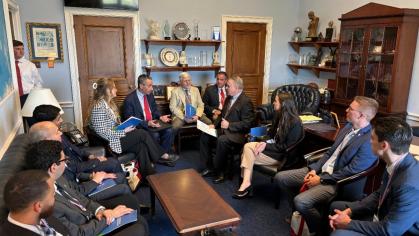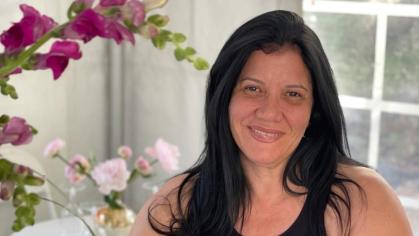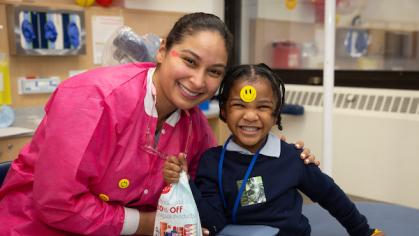On 10th Mission, RSDM Faculty Prints 3D Teeth in the Dominican Republic
Aligners, dentures, retainers—3D printing has been a game changer in dentistry. Rutgers dentists brought this revolutionary technology to rural Dominican Republic, where they transformed the islanders’ smiles.
“There are kids [there] that will lose a front tooth and go their whole lives without a replacement,” explained Mauricio Lavie ’03’06, adjunct assistant professor of restorative dentistry at Rutgers School of Dental Medicine (RSDM). Lavie printed 68 prostheses for all ages in four and a half days. Normally, a single prosthesis takes two weeks. But from initial scanning to finishing touches, Lavie singlehandedly produced these prostheses in tough conditions, like running the 3D printer on a generator and grinding dentures on the street with his backup battery supply. “Even though this deviates from normal office in every capacity— temperature, people, materials—you adapt,” he said. “You make it work.”

Lavie went to the Dominican Republic with Cheerful Heart Dental Mission, which took root with efforts of RSDM Clinical Associate Professor of Oral and Maxillofacial Surgery Pamela Alberto ’80 and John Cornwell, founder of the humanitarian organization, Cheerful Heart Mission. The dental mission just turned 10, providing dental care to thousands of patients annually. For locals, that’s oftentimes their only dentist visit.

The pop-up dental clinic is set up in an empty chamber in a church in Loma de Cabrera, a border village in the northwest of the Dominican Republic. The space has no running water and unstable power. Yet, in a day’s work, volunteers turn it into a bustling clinic with portable dental chairs, lights, Alberto’s x-ray unit, and this year, Lavie’s 3D printer sponsored by SprintRay. The clinic has a sterilization station where tools get bleached in blue bowls and an equipment repair desk run by Alberto’s engineer husband.
When Alberto first went to the island, toothbrushes were considered luxury items. “The kids had no clothes, no shoes, swollen bellies, no food, no water,” she said. “It was horrible. It still brings tears to my eyes.” Each volunteer checks in a 50-pound supply box enroute to the island, bringing dental supplies, including toothbrushes and toothpaste as well as flip-flops and clothes.
In a decade of service, there has been a “tremendous difference” in the community, Alberto observed. The trip has also been transforming students. “It helps them to understand the needs of the world,” said Alberto. “[They] become better doctors because they get to see a lot more patients than they normally would see in dental school.”

Gabriela Vegas, an RSDM pediatric resident from Venezuela, can attest. “We worked really hard, and by the third day, my arm was hurting,” she said. But those 12-hour days made her realize how much she loves dentistry and helping those in need.
There are also longtime volunteers in the mission like Janet Tracy, registered nurse, and professor emerita at William Paterson University. Tracy was instrumental in establishing a patient recording system, which started out as recipe cards and evolved into fingerprinting as many people had the same name and didn’t know birthdays. She also helped expand screenings with blood pressure and glucose tests for everybody over 16. “We've learned how to better support people in the community besides dental needs.”
She hopes to go back as long as she can. “We've begun to feel like family,” she said, “and it feels like going back home.”




